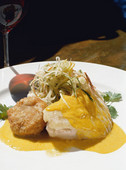
THURSDAY, May 3 (HealthDay News) — A group of Italian researchers has uncovered evidence that regardless of how “full” a person may feel, the body is hard-wired to chemically reward itself by overeating when tempted by yummy foods.
The study on so-called “hedonic hunger” was very small, involving just eight participants, and the authors acknowledge that their findings are preliminary.
They believe, however, that they have identified a physiological link between indulging in goodies well beyond the point of caloric “need” and a reactive jump in levels of two key chemicals.
One chemical is ghrelin, a hormone produced in the stomach that helps regulate reward and motivation. The other is a compound known as “2-AG” (2-arachidonoylglycerol), which is involved in appetite.
“This is a very intriguing study,” said Joe Vinson, a professor of chemistry at the University of Scranton in Pennsylvania. “It involves the psychology of the brain, as well as biochemistry. And, yes, it’s entirely possible that this kind of chemical overriding might happen, in which the brain wants a particular kind of food even though the person is full.” Vinson was not involved in the study.
“What they’re talking about here is a Darwinian evolution thing,” Vinson added. “We’re programmed to stuff ourselves for a rainy day. And when you couple this biochemistry with an environment where food is cheap and available and often provided in huge portion sizes, you basically have everything going against us. It just becomes very hard not to overeat.”
The study, led by Dr. Palmiero Monteleone, of the department of psychiatry at the University of Naples SUN in Italy, appears in the June issue of the Journal of Clinical Endocrinology & Metabolism.
The authors said the notion of essentially eating for fun, as opposed to eating for survival (so-called “homeostatic hunger”), is relatively new. Most of mankind’s history has centered around a basic struggle to collect enough to eat, giving rise to a complex system of physiological and psychological drives that control the way humans approach food.
Those drives, the research team noted, are very much still in play despite a modern environment of food overabundance.
To explore how old-school hunger manifests itself in a brave new world, Monteleone and his colleagues focused on three healthy men and five healthy women between the ages of 21 and 33. No participant was overweight or obese and all were free of any problematic dieting or bingeing behaviors.
Each engaged in two eating tests, spread one month apart. On both occasions, participants first consumed a 300-calorie breakfast that was composed of 77 percent carbohydrates, 10 percent protein and 13 percent fat.
After each meal, participants ranked their level of hunger, while waiting for an hour to pass. At that point, all were presented with what was previously established as their favorite food — a food they would want to eat even after being full.
For five minutes, the participants were allowed only to see and smell their favorite food, during which time they were asked to describe how hungry they were, how much of an urge they had to eat the food and how much of it they planned to eat.
The second test was similar, except this time participants were offered an unappetizing item — a sugarless combination of bread, milk and butter, for example — that contained exactly the same nutrients and calories as the tasty item in the first test.
The result: Despite a shared feeling of satiation following breakfast, the participants said their urge to eat and the amount they planned to eat was significantly higher in the face of their favorite food as compared to the unappetizing food.
What’s more, blood tests revealed that when participants ate their favorite food, their blood levels of the hormone ghrelin increased significantly and stayed high for as much as two hours.
By contrast, ghrelin levels went progressively down after eating the nutritionally equivalent but unappetizing item.
Levels of the compound 2-AG decreased after eating both the favorite and the unappetizing foods. However, 2-AG levels remained much higher (for up to two hours) following both exposure to and consumption of a favorite food, relative to levels registered for the non-favorite food.
“The physiological process underlying hedonic eating is not fully understood,” Monteleone said in a journal news release. But he suggested that “understanding the physiological mechanisms underlying this eating behavior may shed some light on the obesity epidemic.”
More information
For more on obesity, visit the U.S. Centers for Disease Control and Prevention.

